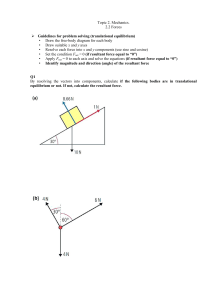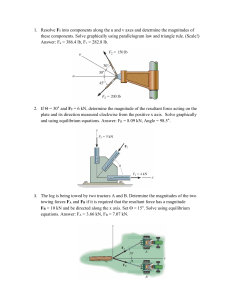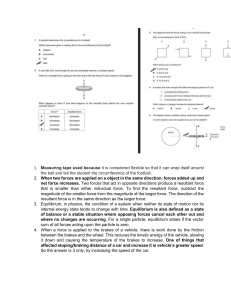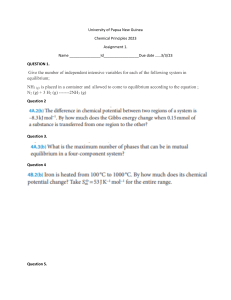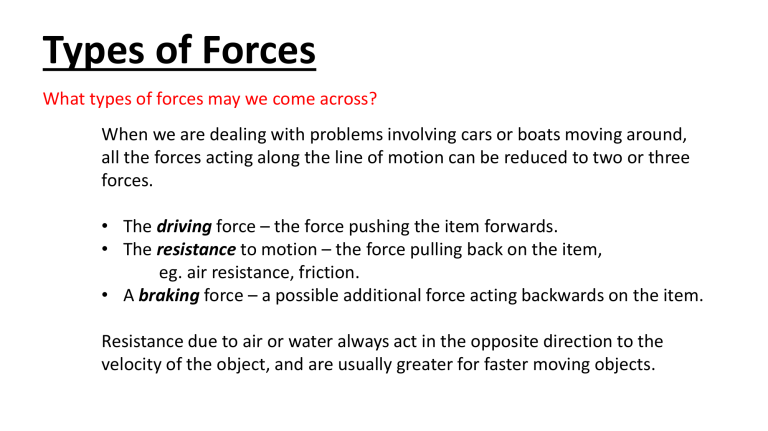
Types of Forces What types of forces may we come across? When we are dealing with problems involving cars or boats moving around, all the forces acting along the line of motion can be reduced to two or three forces. • The driving force – the force pushing the item forwards. • The resistance to motion – the force pulling back on the item, eg. air resistance, friction. • A braking force – a possible additional force acting backwards on the item. Resistance due to air or water always act in the opposite direction to the velocity of the object, and are usually greater for faster moving objects. Types of Forces What types of forces may we come across? We looked previously at an example of a parachute carrying a crate of supplies. The lines joining the crate to the parachute were in tension. Rigid objects can also be in tension. Consider when you grip a pencil at either end with your fingers, and then pull on each end, or push your hands together. When you pull apart, the pencil is in tension. Types of Forces When you push the pencil inwards, the forces on your hands are outwards. The pencil is in compression. The outward force on each hand is then called a thrust force. Types of Forces When more than one force acts on an object, the resultant force is the single force that is equivalent to all the forces acting on the object. If forces F1, F2,… Fn act on an object then the resultant force is R = F 1 + F 2 + … + Fn If the resultant force on an object is zero the object is said to be in equilibrium. There is therefore no change in motion. Accelerating – speed increasing. Not in equilibrium No acceleration. In equilibrium No acceleration. In equilibrium Accelerating – speed increasing. Not in equilibrium No acceleration. In equilibrium No acceleration. In equilibrium No acceleration. In equilibrium Accelerating – direction changing Not in equilibrium Calculating a resultant force. The forces (2i + 10j) N, (6i – 3j) N and (10i + 5j) N act on an object. Find the magnitude and direction of the resultant force. Give the direction as the angle between the resultant force and the unit vector i. Solution: Resultant = (2 + 6 + 10)i + (10 – 3 + 5)j = 18i +12j 12 θ Magnitude = √(12² + 18²) = 21.6 N Direction = tan-1 (12/18) θ = 33.7˚ 18
